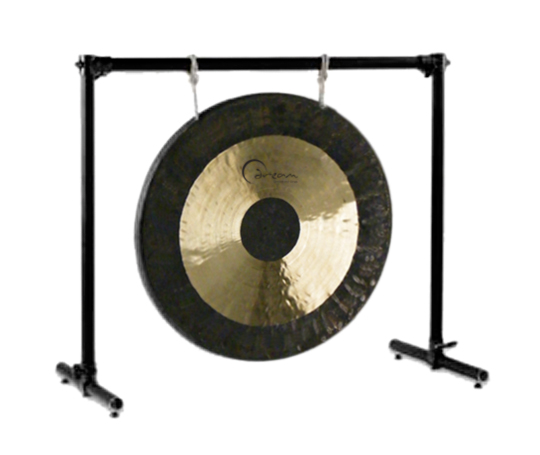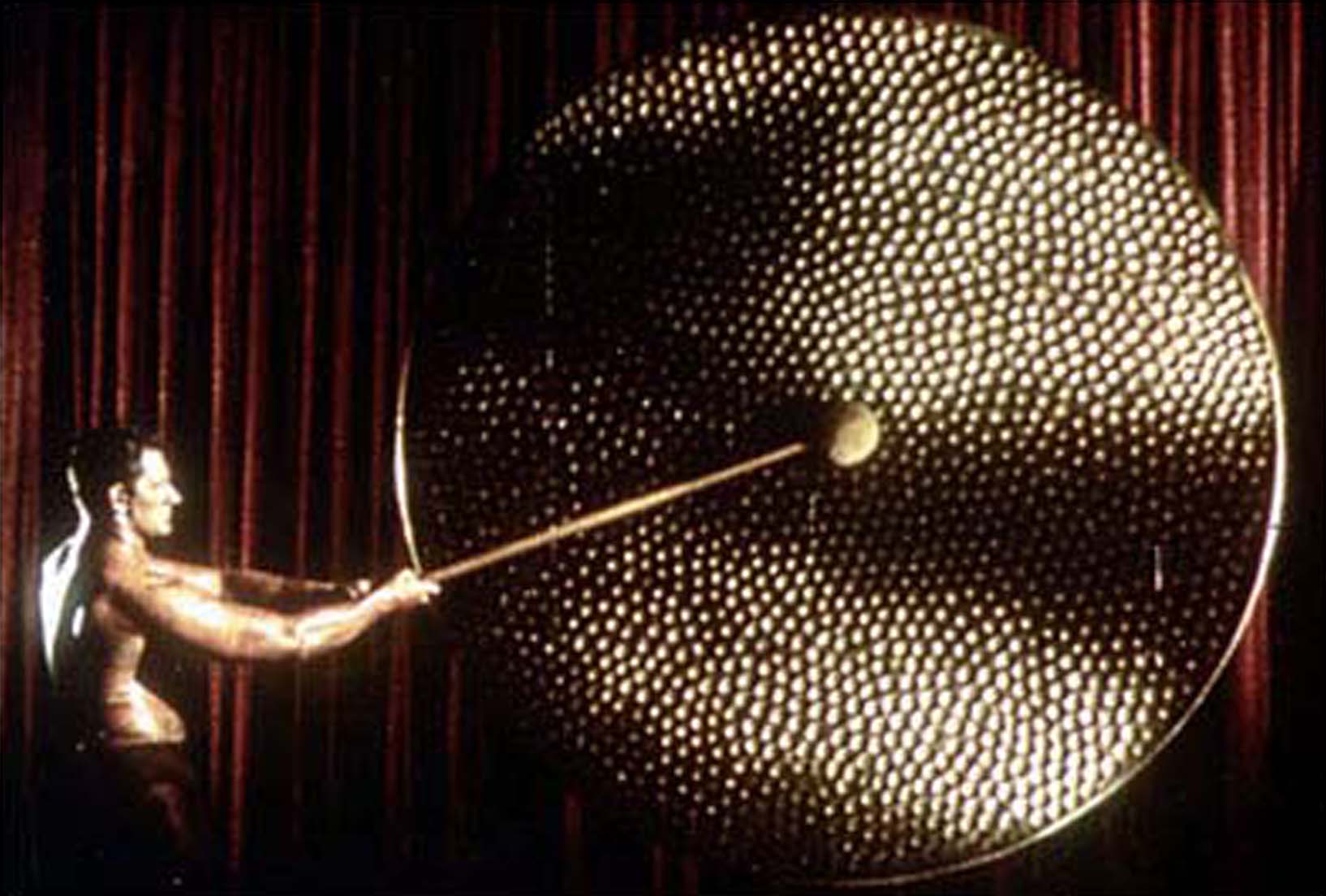Gong This example is over 30 inches in diameter

The
gong, also known as the
tamtam , is a very large metal plate that hangs suspended from a metal pipe. It looks similar to a cymbal and is also untuned, but is much larger and has a raised centre.
To play it, you hit the centre with a soft mallet. Depending on how hard you hit it, you can make a deafening crash or the softest flicker of sound.
By using it wisely, as a voice on your AR, it can be a very effective addition to your renditions. It is not the sort of sound you want to overdo, or keep bashing repetatively. At appropriate points, it can be very effective indeed, so this is more likely to be assigned to one of your keys or pedal, rather than incorporated into a style.
I am sure that you will be familiar with this, from the start of the Rank Organisation films

It was jokingly said, that it was Arthur Askey hitting the small gong, found on granny's sideboard!
The Gongman (also known as the "man-with-the-gong") is a company trademark for the Rank Organisation. It was used as the introduction to all Rank films, many of which they shot at their Pinewood Studios, and included those Rank distributed. The Gongman logo first appeared on films distributed by General Film Distributors, which was established in 1935 by the British producer C. M. Woolf and J. Arthur Rank. It was C.M. Woolf's secretary who devised the man-with-a-gong trademark. When the Rank Organisation was established in 1937, with General Film Distributors as one of its cornerstones, the logo was adopted for the whole organisation.
The Gongman film logo sequence depicts a man striking a huge gong with a deep resonant sound. The gongs used in the films were props made of plaster or papier-mâché. The sound came from James Blades striking a real gong—specifically a Chinese instrument called a
tamtam that was much smaller than the prop. During the sequence, the text "General Film Distributors", " J. Arthur Rank Film Distributors", "J. Arthur Rank presents" or "'The Rank Organisation" appeared over the gong.
Athletes who played the Gongman in the film sequence over the years, included boxer Bombardier Billy Wells and wrestler Ken Richmond. Also, George Francis Moss Snr played the Gongman.
In 2012, to celebrate the Gongman's 75th anniversary, The Rank Group, the gaming company that in 1996 acquired the remaining business interests of the Rank Organisation, as well as the rights to its logo and name, announced a nationwide competition to find a new Gongman, or woman, for the 21st century, and Chris Rowley from Stoke-on-Trent won the competition and is the new official Rank Gongman.
In the next Reply we'll ring the
Chimes.
Peter